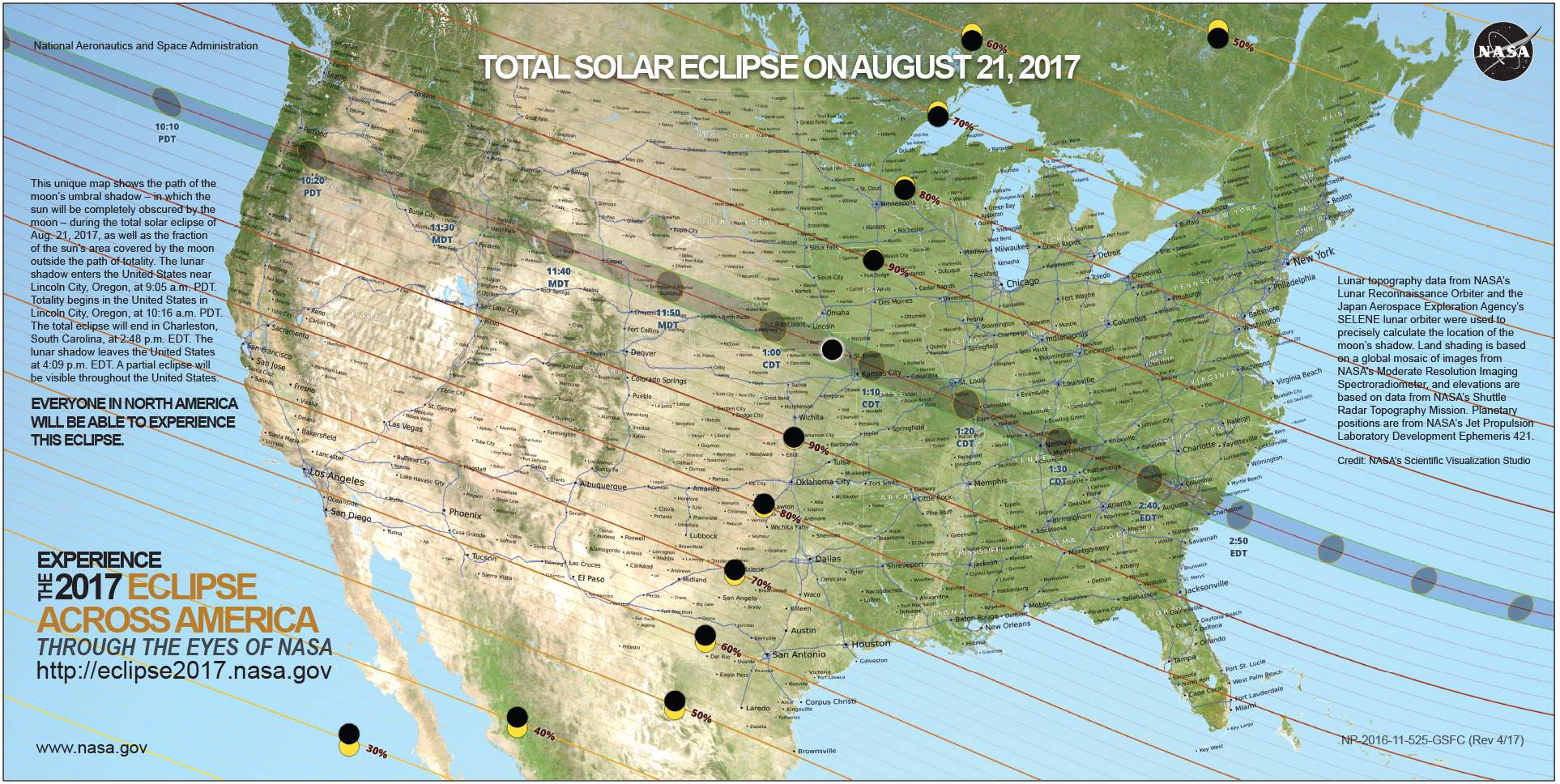Chasing the Total Solar Eclipse from NASA’s WB-57F Jets
For most viewers, the Aug. 21, 2017, total solar eclipse will last less than two and half minutes. But for one team of NASA-funded scientists, the eclipse will last over seven minutes. Their secret? Following the shadow of the Moon in two retrofitted WB-57F jet planes.
Amir Caspi of the Southwest Research Institute in Boulder, Colorado, and his team will use two of NASA’s WB-57F research jets to chase the darkness across America on Aug. 21. Taking observations from twin telescopes mounted on the noses of the planes, Caspi will capture the clearest images of the Sun’s outer atmosphere — the corona — to date and the first-ever thermal images of Mercury, revealing how temperature varies across the planet’s surface.
“These could well turn out to be the best ever observations of high frequency phenomena in the corona,” says Dan Seaton, co-investigator of the project and researcher at the University of Colorado in Boulder, Colorado. “Extending the observing time and going to very high altitude might allow us to see a few events or track waves that would be essentially invisible in just two minutes of observations from the ground.”
The total solar eclipse provides a rare opportunity for scientists to study the Sun, particularly its atmosphere. As the Moon completely covers the Sun and perfectly blocks its light during an eclipse, the typically faint corona is easily seen against the dark sky. NASA is funding 11 science projects across America for scientists to take advantage of the unique astronomical event to learn more about the Sun and its effects on Earth’s upper atmosphere.

(Photo illustration) During the upcoming total solar eclipse, a team of NASA-funded scientists will observe the solar corona using stabilized telescopes aboard two of NASA’s WB-57F research aircraft. This vantage point provides distinct advantages over ground-based observations, as illustrated by this composite photo of the aircraft and the 2015 total solar eclipse at the Faroe Islands.
Credits: NASA/Faroe Islands/SwRI
The corona is heated to millions of degrees, yet the lower atmospheric layers like the photosphere — the visible surface of the Sun — are only heated to a few thousand degrees. Scientists aren’t sure how this inversion happens. One theory proposes that magnetic waves called Alfvén waves steadily convey energy into the Sun’s outer atmosphere, where it is then dissipated as heat. Alternatively, micro explosions, termed nanoflares — too small and frequent to detect individually, but with a large collective effect — might release heat into the corona.

One of the WB-57F jets is readied for a test run at NASA’s Johnson Space Center in Houston. The instruments are mounted under the silver casing on the nose of the plane.
Credits: NASA’s Johnson Space Center/Norah Moran
Due to technological limitations, no one has yet directly seen nanoflares, but the high-resolution and high-speed images to be taken from the WB-57F jets might reveal their effects on the corona. The high-definition pictures, captured 30 times per second, will be analyzed for wave motion in the corona to see if waves move towards or away from the surface of the Sun, and with what strengths and sizes.






